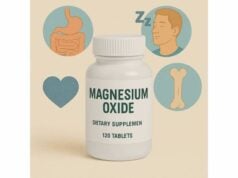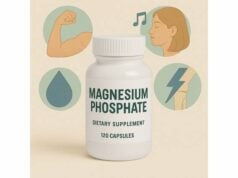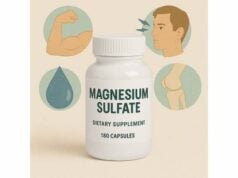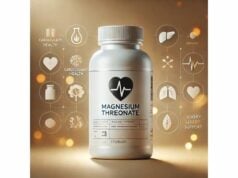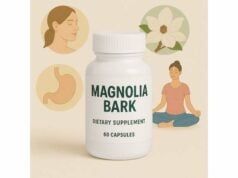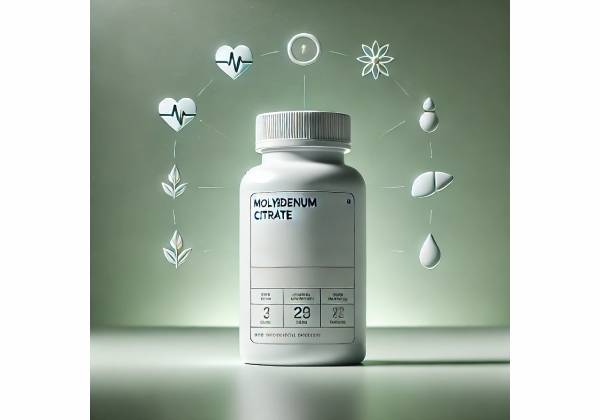
Molybdenum citrate is a supplemental form of molybdenum—a trace mineral your body needs in microgram amounts to run several detoxification and metabolism enzymes. Although deficiency is uncommon in people eating varied diets, interest in molybdenum supplements has grown among those who react to dietary sulfites, follow very low-protein diets, or take long-term parenteral nutrition. As a citrate-bound mineral, it dissolves readily and provides elemental molybdenum that the body converts into the molybdenum cofactor used by enzymes such as sulfite oxidase, xanthine oxidase, aldehyde oxidase, and mARC. This article explains what molybdenum citrate is, how it works, who may benefit, how to choose and use it wisely, and how to avoid side effects. You will also see practical dosage guidance aligned with international reference values, including differences between U.S. and European upper limits. The goal is simple: help you decide if molybdenum citrate belongs in your routine—or if your needs are better met with food first and targeted medical care when appropriate.
Quick Overview
- Supports sulfite breakdown and purine metabolism via molybdenum-dependent enzymes (e.g., sulfite oxidase).
- Start low; typical supplemental ranges are 25–150 mcg/day, not exceeding regional upper limits (e.g., 600–2,000 mcg/day).
- High intakes may raise uric acid or impair copper status; monitor if you have gout or unexplained anemia.
- Avoid self-supplementing if pregnant, with significant kidney disease, or on copper-lowering therapy—seek clinician guidance.
Table of Contents
- What is molybdenum citrate?
- Does it work and who benefits?
- Benefits you can expect and limits
- How to choose and take it
- How much should I take?
- Side effects, interactions, and who should avoid
What is molybdenum citrate?
Molybdenum citrate is a dietary supplement in which elemental molybdenum is bound to citric acid. Once swallowed, the salt dissolves, and the molybdenum ion is absorbed primarily as molybdate (MoO₄²⁻). Inside cells, molybdenum is attached to a specialized molecule called molybdopterin to form the “molybdenum cofactor.” That cofactor enables four human enzymes to work: sulfite oxidase (breaks down sulfites to sulfate), xanthine oxidase and aldehyde oxidase (handle purines and many heterocyclic compounds), and mARC (participates in reducing N-hydroxylated compounds). Without adequate cofactor, these enzymes slow, and metabolic byproducts can accumulate.
From a supplement-design standpoint, “citrate” is one of several salt or chelate forms used in capsules and tablets, alongside molybdate, glycinate, and other complexes. The meaningful variable for you is the elemental molybdenum amount on the label, listed in micrograms (mcg). Regardless of form, your digestive tract delivers the same biologically relevant species—molybdate—that your body uses to assemble the cofactor. That is why many professional monographs emphasize dose and safety over brand of salt. In practice, products supply anywhere from 25 to 500 mcg per serving, with 45 mcg as the U.S. Daily Value reference amount.
Food is the default source for most people. Legumes (beans, lentils, peas), whole grains, and organ meats tend to be highest, though soil and water content influence food levels. Typical adult intakes in developed countries meet or exceed daily requirements without supplements. Because the kidneys regulate molybdenum tightly and excrete excess, the mineral doesn’t “load up” easily in healthy people. That said, supplementing far above daily needs can disturb other mineral systems—particularly copper—and may raise uric acid in susceptible individuals.
In short, molybdenum citrate is a convenient, soluble way to deliver elemental molybdenum when a supplement is warranted. It’s not inherently “stronger” than other forms; it’s simply one route to the same end product your enzymes require.
Does it work and who benefits?
The purpose of supplementing molybdenum isn’t to boost energy or performance. It’s to ensure that specific cofactor-dependent enzymes have what they need. For most healthy adults eating varied diets, that requirement is already met—so adding a supplement does not lead to noticeable benefits. The key question is whether you fall into a group where intake may be low, demand may be higher, or enzyme function is stressed by diet, medications, or medical care.
Who may reasonably consider molybdenum citrate (with clinician input):
- People reacting to high-sulfite meals or drinks. Sulfite oxidase uses the molybdenum cofactor to convert sulfites to sulfate. Some individuals report headaches or flushing with sulfite-rich foods (e.g., some wines, dried fruit). While controlled trials are limited, a cautious, short-term trial at low doses is sometimes used by clinicians to support sulfite handling, paired with diet modification.
- Individuals on long-term parenteral nutrition (TPN) or severely restricted diets. Trace elements, including molybdenum, must be included deliberately in TPN. Oral intake can also be low in highly selective diets or prolonged elimination diets. In these settings, supplementation is medical, not self-directed.
- People with environmental or occupational exposures. Rarely, high exposure to molybdenum dusts or unusually high water/soil levels has been associated with elevated uric acid or gout-like symptoms. Supplementation is not the solution here; rather, monitoring and exposure management matter. Still, awareness of total intake (food, water, supplements) is prudent.
- Genetic disorders affecting the cofactor or sulfite oxidase. These are rare, serious conditions diagnosed in infancy (e.g., molybdenum cofactor deficiency). Treatment is specialized (for example, targeted cofactor precursors), and over-the-counter molybdenum salts are not appropriate.
Who likely does not benefit:
- Healthy adults already consuming legumes and whole grains regularly.
- Anyone seeking general “detox” effects—the body’s enzyme pathways already operate at capacity when cofactor needs are met, and extra molybdenum doesn’t supercharge them.
The bottom line: molybdenum citrate “works” insofar as it supplies elemental molybdenum your body can use; whether you notice a benefit depends on your baseline intake, diet, and clinical context. Think of it as a precision tool for specific situations, not a universal wellness booster.
Benefits you can expect and limits
Realistic benefits of appropriate molybdenum intake cluster around enzyme efficiency:
- Sulfite handling. Adequate molybdenum supports sulfite oxidase, helping convert dietary sulfites to sulfate. If a person’s symptoms are truly sulfite-driven and intake is marginal, optimizing molybdenum may reduce reactivity alongside dietary changes. Because responses vary, any trial should be time-limited, low-dose, and tracked with a symptom log.
- Purine metabolism. Xanthine oxidase uses the cofactor to convert xanthine/hypoxanthine to uric acid. Normally, your body balances this pathway well. Adequate molybdenum supports normal purine processing; however, excess molybdenum may increase uric acid, which is counterproductive if you have gout.
- Drug and xenobiotic metabolism. Aldehyde oxidase and mARC participate in metabolizing a variety of compounds. Ensuring you’re not deficient supports predictable drug handling, though routine supplementation to “improve detox” is not evidence-based.
Important limits to understand:
- Deficiency is rare, and “more” is not “better.” Most diets meet needs. Taking large doses without a clinical reason can push uric acid higher or nudge copper status lower over time.
- Form vs function. Molybdenum citrate is one of several absorbable forms. The body uses molybdate to build the cofactor regardless of the supplement’s original salt or chelate. Bioavailability differences among common forms have not been shown to translate into meaningful clinical differences in healthy people.
- Sulfite sensitivity is multifactorial. Wine reactions, for example, may reflect histamine, alcohol, or other compounds—not just sulfites. If molybdenum doesn’t change your response after a cautious trial, stop and reassess the trigger.
- Not a treatment for genetic enzyme defects. Inherited disorders involving the cofactor or sulfite oxidase require specialist therapies; over-the-counter molybdenum cannot substitute.
Practical takeaways: If you and your clinician decide to try molybdenum citrate—for example, before a meal that reliably triggers sulfite symptoms—begin with the lowest practical dose (e.g., 25–50 mcg), keep a simple symptom diary, and review after 2–4 weeks. If there’s no clear benefit, discontinue. Meanwhile, emphasize food sources that naturally cover daily needs: a few servings of legumes and whole grains each week typically suffice.
How to choose and take it
1) Read the label for elemental molybdenum. Some bottles list a compound weight (e.g., “molybdenum citrate”) and the elemental amount separately. The clinically relevant number is molybdenum (as molybdenum citrate) — XX mcg. Compare that to your target intake and the reference values below.
2) Match dose to purpose.
- Nutritional maintenance when diet is limited: consider 25–75 mcg/day, ideally short-term while you diversify food intake.
- Sulfite-focused trial with clinician supervision: 25–150 mcg/day, often timed with meals that contain sulfites.
- Do not exceed local upper limits (see the next section) and avoid long courses at higher intakes without monitoring.
3) Choose simple formulations. Single-ingredient capsules reduce confounders. If you use a multimineral, check that total daily molybdenum from all products stays within limits.
4) Timing and with-food vs empty stomach. Molybdenum salts absorb well either way, but taking with food typically improves tolerance and aligns intake with meal-related sulfite exposure.
5) Quality cues. Prefer products that:
- Provide third-party testing confirmation.
- Identify the form (e.g., “as molybdenum citrate”) and elemental amount.
- Avoid unnecessary botanicals or proprietary “detox blends” that complicate safety.
6) Track what matters. If you have gout, a history of high uric acid, or unexplained anemia, talk with your clinician before starting. If you proceed, monitor symptoms and consider periodic labs (uric acid, complete blood count). Any rise in joint pain, unusual fatigue, or neurological symptoms warrants stopping and seeking care.
7) Pair with diet. Most people can meet needs by food alone. Including beans, lentils, peas, and whole grains in your meal plan is a sustainable way to maintain adequate intake while delivering fiber, protein, and micronutrients beyond molybdenum.
8) Know when not to use it. Pregnancy and lactation require precise micro-nutrient balances. Kidney disease alters trace element clearance. Copper-lowering drugs or chelators (e.g., tetrathiomolybdate prescribed for Wilson’s disease) can interact conceptually with high molybdenum exposure. In all of these cases, use only under medical guidance.
Selecting molybdenum citrate is ultimately about right-sizing a micro-dose for a clear purpose—and stopping once that purpose is met.
How much should I take?
Start with the why, then set the how much. Global nutrition authorities align on very small daily needs and caution against high chronic intakes.
Daily requirement (adults):
- Recommended intake: ~45 mcg/day (the U.S. Recommended Dietary Allowance and Daily Value reference). Typical diets reach or exceed this without supplements.
Upper limits (do not exceed without medical supervision):
- United States reference: 2,000 mcg/day from all sources for adults.
- European reference (Scientific Committee on Food/EFSA): 600 mcg/day for adults (≈ 10 mcg/kg/day).
Because these differ, follow the stricter limit applicable where you live or as advised by your clinician.
Supplement ranges in real life:
- Multivitamin/mineral products: commonly 45–100 mcg per day.
- Single-ingredient capsules: often 25–500 mcg. Doses at the top of that range are rarely necessary and can be counterproductive.
Suggested use scenarios (for discussion with a healthcare professional):
- Short course to cover a restricted diet: 25–75 mcg/day for several weeks while re-expanding food variety.
- Sulfite-related trial: 25–150 mcg/day, timed with higher-sulfite meals. If no clear benefit after 2–4 weeks, discontinue.
- Parenteral nutrition: dosing is individualized and prescribed; do not self-supplement.
Special populations:
- Pregnancy/lactation: daily needs are modest (~50 mcg/day), but self-supplementing beyond a standard prenatal is not recommended.
- Kidney disease: molybdenum is renally excreted; impaired clearance can raise levels—supplement only under supervision.
- Gout or hyperuricemia: stay at the low end (or avoid altogether) due to the potential to raise uric acid at higher intakes.
Practical math tips:
- Check all sources (multivitamin, multimineral, “detox” blends).
- If your multivitamin already supplies ~45–100 mcg, adding a single-ingredient capsule is rarely necessary unless documented low intake or a targeted clinical reason exists.
Aim for sufficiency, not maximalism: enough to support enzyme function, not so much that you invite side effects.
Side effects, interactions, and who should avoid
Common tolerance: At nutritional doses, most people do well. Taking with food helps minimize mild GI upset.
Dose-related risks to know:
- Uric acid and gout. Because xanthine oxidase produces uric acid, high molybdenum intakes can tip the balance upward in susceptible people. If you have gout, discuss any supplement plan with your clinician and consider avoiding molybdenum altogether unless there’s a compelling reason.
- Copper status. Very high molybdenum exposures can antagonize copper metabolism, potentially contributing to anemia or neurologic symptoms over time. This is unusual at typical supplement doses but is a real concern with chronic excess.
- Neurologic symptoms at extreme intakes. Case reports describe neuropsychiatric effects after sustained, very high supplemental intakes. These reports underscore why adhering to upper limits matters.
- Kidney handling. The kidneys are the main route of excretion. Reduced renal function can raise circulating levels even at modest doses.
Medication and nutrient interactions:
- Copper chelators or Wilson’s disease therapy. Do not combine over-the-counter molybdenum supplements with prescription copper-lowering therapy unless your specialist instructs you to.
- Drugs metabolized by aldehyde oxidase or mARC. While routine clinical interactions with nutritional doses are not well defined, caution is sensible when starting or stopping supplements that theoretically influence these enzyme systems.
Who should avoid self-supplementation (without clinician guidance):
- Pregnant or breastfeeding individuals.
- People with moderate-to-severe kidney disease.
- Individuals with gout or persistently high uric acid.
- Anyone with unexplained anemia or suspected copper deficiency.
When to seek help immediately: New joint pain and swelling, severe headaches, neurologic changes (confusion, seizures), or signs of anemia (fatigue, pallor) after starting a high-dose product—stop the supplement and contact a healthcare professional.
Smart safety habits:
- Favor the lowest effective dose for the shortest needed duration.
- Keep total daily intake below your region’s upper limit.
- Reassess regularly: if a supplement hasn’t provided a clear, trackable benefit, discontinue.
Used thoughtfully, molybdenum citrate can be part of a targeted plan. Used casually at high doses, it can cause more problems than it solves.
References
- Molybdenum – Health Professional Fact Sheet 2021 (Guideline)
- Overview on Tolerable Upper Intake Levels as derived by the Scientific Committee on Food (SCF) and the EFSA Panel on Dietetic Products, Nutrition and Allergies (NDA) 2025 (Guideline)
- Molybdenum – a scoping review for Nordic Nutrition Recommendations 2023 2023 (Systematic Review)
- Molybdenum Cofactor Deficiency in Humans 2022 (Review)
Disclaimer
This article provides general information about molybdenum citrate and is not a substitute for professional medical advice, diagnosis, or treatment. Do not start, stop, or change any supplement or medication without guidance from a qualified healthcare professional who knows your medical history, medications, and lab results. If you are pregnant or breastfeeding, have kidney disease, gout, copper-related disorders, or other chronic conditions, seek personalized advice before using molybdenum supplements.
If you found this guide useful, please consider sharing it with a friend or on Facebook, X, or your preferred platform. Your support helps us continue creating clear, evidence-based health content. Thank you!

